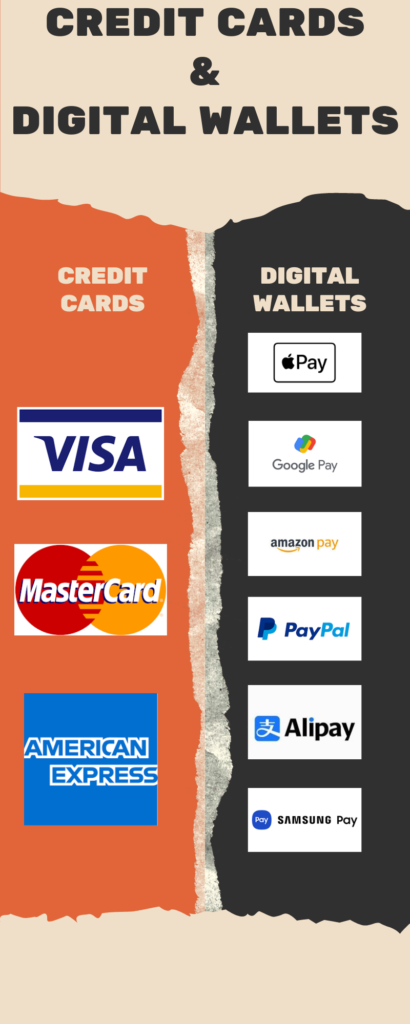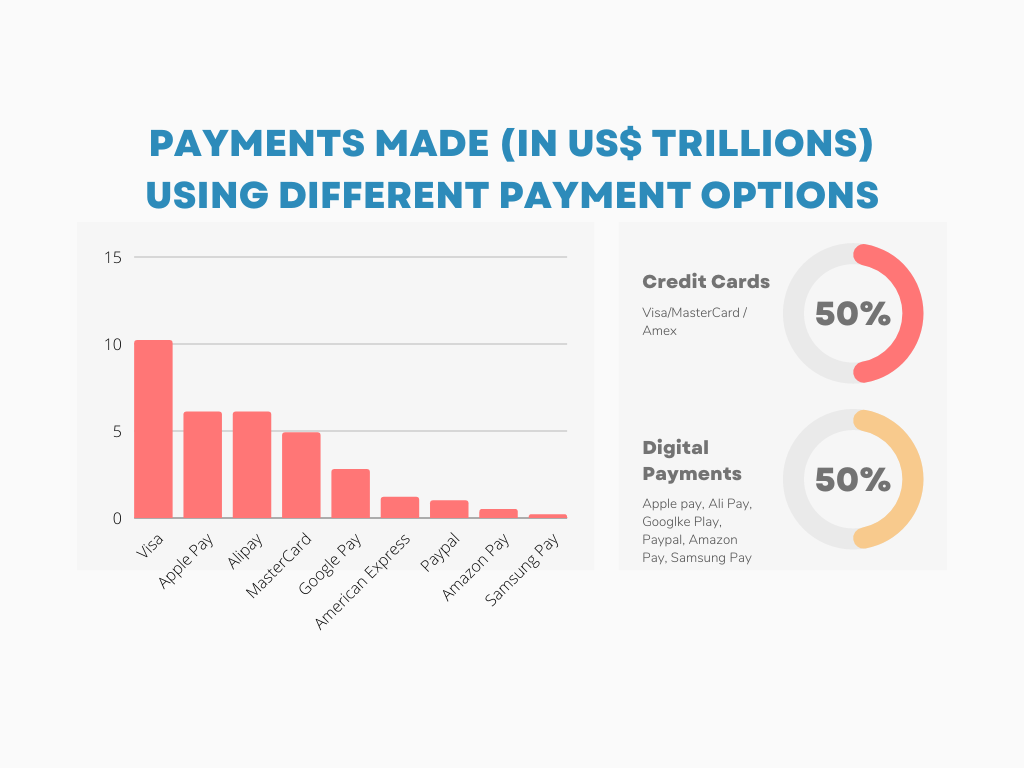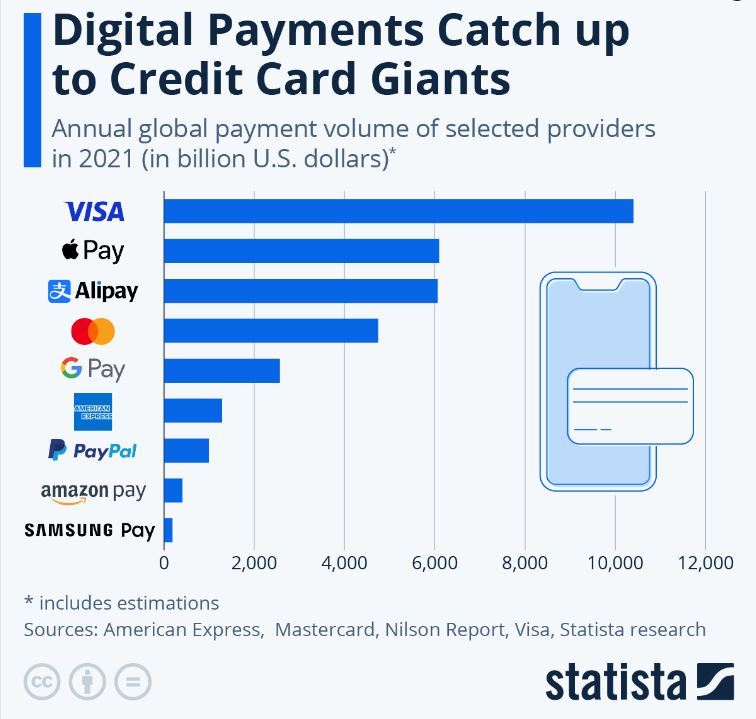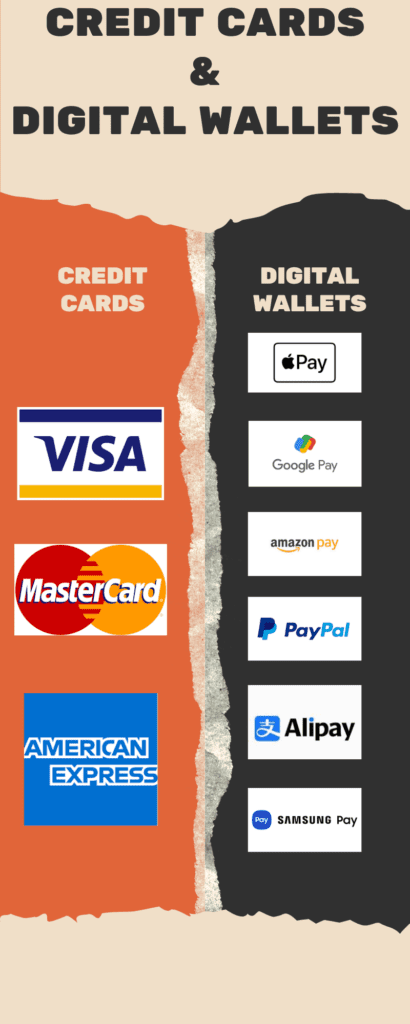Credit Cards are Being challenged by Digital Payments.

Credit cards are being challenged by digital payments. Visa is the indisputable global payment processor leader, processing more than $10 trillion in payments each year. However, the world’s two main credit card behemoths, MasterCard and American Express, have already been surpassed by digital and mobile payment companies. Source: Statista.com

Credit Cards are Being challenged
Bank-issued charge cards first appeared in 1946, with the introduction of the “Charg-It” card by a Brooklyn banker called John Biggins.
The Diners Club Card was introduced in 1950. The Diners Club Card is credited as being the first widely used credit card.
American Express was the first to develop a plastic card in 1959, replacing the earlier cardboard and celluloid cards.
Amex and Discover networks are mostly issued by those two firms (with a few exceptions). Meanwhile, because Visa and Mastercard do not issue credit cards, a card on the Visa or Mastercard network might be issued by any other credit card firm.
The Diagram below shows the Annual Global Payment volume of selected Providers

Digital Payment – Digital Wallets & Credit Cards
Digital Payments are carried out by both Credit Cards and E-Wallets.
Digital Payment platforms use e-wallets. Apple Pay, Google Pay, Ali Pay, Amazon Pay, PayPal, Venmo, Dwolla, Zelle, etc. are Digital Payment Platforms using e-wallets.
E-Wallet is a Cloud-based software application used as a payment method for online and offline shopping.
A credit card is a plastic card that can be used to make online or offline payments. The card is funded by a predetermined amount borrowed from the issuing bank
Before you use any Digital Wallet Platform, you must first create an account. You do not need an account to use your credit card because it is readily handled through net banking.
You will have to transfer money from your bank account to your digital wallets, and you will not be given a credit limit while completing the payment. Credit card allows you to spend more money than is available in your account. It means you can enjoy credit card credit limitations.
You cannot make any payments with digital wallets because you will always require a cell phone and internet access. You can use your credit card to make offline payments at POS terminals by swiping it.
Digital payments via a digital wallet are device-specific, and you do not need to carry anything else. To make a payment using your credit card, you must have it with you or know the credit card data.
You can reload money into a digital wallet using several credit cards, debit cards, and net banking accounts. You will only have one account to make payments from, and you will be unable to recharge your credit card.

Most interesting areas to watch in the payments space over 2022
Andrew Torre, Visa’s regional president for Central & Eastern Europe, Middle East, and Africa looks ahead at his payment predictions for 2022 while outlining why the future of money is digital.
Embedded Finance: With evolving regulations, more and more merchants are exploring how financial services can complement their revenues, while a raft of new banking-as-a-service providers is helping create new use cases and revenue streams.
Green payments: New solutions, such as Visa Eco Benefits, can help integrate features into card payments, helping users to understand the impact of their spending on the environment, with transactions offering donations towards eco-friendly and carbon offset partners.
The Metaverse: The Metaverse is creating a new shared space between different digital worlds, blending virtual and augmented reality. Whether it is Nike selling virtual sneakers, Ariane Grande’s concert in Fortnite, or a replica of Florence’s Gucci Garden in Roblox, we are seeing a ‘third space’ of virtual economies allowing sales of virtual goods
Buy Now Pay Later: Following another year of rising e-commerce adoption, consumer interest in installment-based solutions has rapidly increased. Like credit cards, Buy Now Pay Later (BNPL) offers unsecured credit to consumers
Crypto goes mainstream: Visa is playing a leading role in enabling this entry of crypto into mainstream financial services by working with our financial institutions to allow their clients to buy and hold crypto through digital custodians and enabling more than 60 partners to issue cards to their crypto customers to buy various goods and services
Open banking: Through APIs, consumers can share information with trusted third parties, who in turn create innovative financial solutions. This enhances the scope for entirely new products and services – and revenue streams – for acquirers and fintech

A Survey by MasterCard on the Future of Digital Payments
According to a Mastercard poll, 85% of individuals utilized at least one developing digital payment option in the previous year, such as direct bank account payments, buy now, pay later plans, money transfer applications, crypto, QR, and wearables payments.
There are clear signs that the shift away from cash is continuing. Only about four in 10 millennials and Gen Z respondents report having used cash over the same time frame.
More than a decade after its inception, cryptocurrency is still primarily regarded as an investment vehicle. The poll, which was done prior to the recent dip in the value of cryptocurrency, revealed consumers’ divided feelings: A little more than half are pessimistic about the value of digital assets, but almost the same number believe they might be worthwhile investments. Consumers want more industry stability,
More than two-thirds of customers believe that utilizing biometric technologies for identification or payments – fingerprints and palm prints, as well as facial and voice recognition — is more secure than using a PIN, password, or other kinds of identification.
Does anyone balance their checkbook by hand? Better yet, does anyone still have a checkbook? Three-quarters of respondents say they pay their bills digitally.
“Buy now, pay later” has become one of the hottest trends in payments in recent years, with these payments expect to account for nearly a quarter of all global e-commerce transactions by 2026,
Visit other trending articles on this site: True Satellite-to-Cellular Service by SpaceX and T-Mobile
shop now2 Wigs Only $ 149



